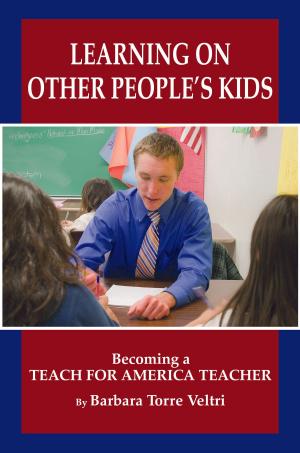Immigrant Youth Who Excel
Globalization's Uncelebrated Heroes
Nonfiction, Reference & Language, Education & Teaching, Student & Student Life, Higher Education| Author: | Rivka A Eisikovits | ISBN: | 9781607528838 |
| Publisher: | Information Age Publishing | Publication: | October 1, 2008 |
| Imprint: | Information Age Publishing | Language: | English |
| Author: | Rivka A Eisikovits |
| ISBN: | 9781607528838 |
| Publisher: | Information Age Publishing |
| Publication: | October 1, 2008 |
| Imprint: | Information Age Publishing |
| Language: | English |
The book has two parts. Through a series of four interconnected studies, the first focuses on the youths’ perceptions. We, meaning the reader and I, accompany them on their way into the new school, in chapter 1, and listen to evaluations of their academic and social experiences. In chapter 2, we learn about their informal social adaptation in various life settings, emphasizing gender differences in coping mechanisms. From here, we proceed to public opinion formation in the course of preparation for firsttime voting in a new political culture (chapter 3). Perceptions of the military, in chapter 4, as the last stage of compulsory postsecondary civic engagement for Israeli youngsters, close this section. The second part places in the limelight the reactions of the educational system to catering to the needs of these immigrants who excel. Chapter 5 dwells on teachers’ perspectives on the challenge they present, exploring differences in these perspectives according to their years of experience and subject matter area. Chapter 6 examines the organizational modus operandi of several schools, eliciting fieldbased models for handling immigrant students. Evolving from the latter, chapter 7 offers an anthropological approach for training teachers to work optimally with immigrant and culturally diverse students. The programmatic epilogue offers an operational model for materializing the potential to enhance global participation for immigrants as well as locals, ensuing from the intercultural encounter. Research procedures that are common to a number of studies are explained upon first mention. To aid in the visualization of adaptive patterns emerging from this large body of data—on both immigrant youth and educators in the receiving society—tables summarizing findings are provided for all but chapter 7. In addition to the comparative component, each chapter also includes an assessment of globalization proneness in light of its specific topic.
The book has two parts. Through a series of four interconnected studies, the first focuses on the youths’ perceptions. We, meaning the reader and I, accompany them on their way into the new school, in chapter 1, and listen to evaluations of their academic and social experiences. In chapter 2, we learn about their informal social adaptation in various life settings, emphasizing gender differences in coping mechanisms. From here, we proceed to public opinion formation in the course of preparation for firsttime voting in a new political culture (chapter 3). Perceptions of the military, in chapter 4, as the last stage of compulsory postsecondary civic engagement for Israeli youngsters, close this section. The second part places in the limelight the reactions of the educational system to catering to the needs of these immigrants who excel. Chapter 5 dwells on teachers’ perspectives on the challenge they present, exploring differences in these perspectives according to their years of experience and subject matter area. Chapter 6 examines the organizational modus operandi of several schools, eliciting fieldbased models for handling immigrant students. Evolving from the latter, chapter 7 offers an anthropological approach for training teachers to work optimally with immigrant and culturally diverse students. The programmatic epilogue offers an operational model for materializing the potential to enhance global participation for immigrants as well as locals, ensuing from the intercultural encounter. Research procedures that are common to a number of studies are explained upon first mention. To aid in the visualization of adaptive patterns emerging from this large body of data—on both immigrant youth and educators in the receiving society—tables summarizing findings are provided for all but chapter 7. In addition to the comparative component, each chapter also includes an assessment of globalization proneness in light of its specific topic.















